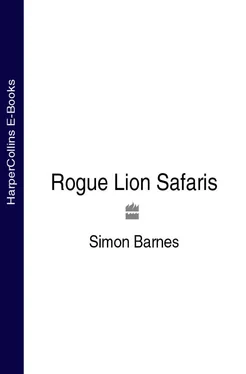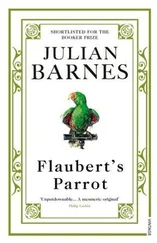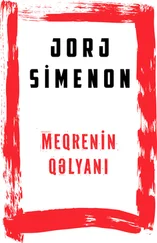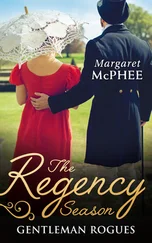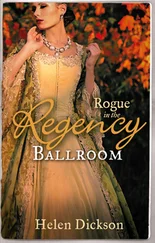
Dedication Dedication I: South Chapter 1 Chapter 2 Chapter 3 Chapter 4 Chapter 5 Chapter 6 Chapter 7 Chapter 8 Chapter 9 Chapter 10 Chapter 11 II: North III: South Chapter 1 Chapter 2 Chapter 3 Chapter 4 Chapter 5 Chapter 6 Chapter 7 Chapter 8 Chapter 9 Chapter 10 Chapter 11 Keep Reading About the Author Copyright About the Publisher
For Bob, Jess and Manny with grateful thanks; for CLW with eternal gratitude.
It is customary on these occasions to make some kind of disclaimer: I would like to begin by doing the opposite. The geography and ecology of Mchindeni National Park is based on a real park Somewhere In Africa; every observation of wildlife and every interaction between wildlife and people come from my own notebooks. The single exception is based meticulously on a personally communicated eye-witness report. However, the politics and the administration of the park are entirely fictional, as are all the human characters to be found there. I would also like to acknowledge the most frequently used reference material: The Serengeti Lion: A Study of Predator-Prey Relations by George B. Schaller, Portraits in the Wild by Cynthia Moss, Roberts’ Birds of Southern Africa by Gordon Lindsay Maclean and the bird-sound recordings of Baron Robert Stjernstedt.
Cover
Title Page Simon Barnes
Dedication Dedication Dedication I: South Chapter 1 Chapter 2 Chapter 3 Chapter 4 Chapter 5 Chapter 6 Chapter 7 Chapter 8 Chapter 9 Chapter 10 Chapter 11 II: North III: South Chapter 1 Chapter 2 Chapter 3 Chapter 4 Chapter 5 Chapter 6 Chapter 7 Chapter 8 Chapter 9 Chapter 10 Chapter 11 Keep Reading About the Author Copyright About the Publisher For Bob, Jess and Manny with grateful thanks; for CLW with eternal gratitude.
I: South
Chapter 1
Chapter 2
Chapter 3
Chapter 4
Chapter 5
Chapter 6
Chapter 7
Chapter 8
Chapter 9
Chapter 10
Chapter 11
II: North
III: South
Chapter 1
Chapter 2
Chapter 3
Chapter 4
Chapter 5
Chapter 6
Chapter 7
Chapter 8
Chapter 9
Chapter 10
Chapter 11
Keep Reading
About the Author
Copyright
About the Publisher
I
George Sorensen, ectomorphic, myopic, leotropic, pointed to the crown of an umbrella thorn, where three vultures sat waiting.
‘Lion?’ he asked, but with George, questions were often really statements. Lion: for sure: and I knew George would want to move in. Dread and delight, familiar fellows, gripped me again.
George pointed a courteous finger skyward, and said to Helen: ‘Striped kingfisher. A duet. Remember what we said about pair-bonding? Hear them? All right, we’ll move in, shall we?’
I heard at his word the razor-stropping duettists, male and female, at their hundred-times-a-day ritual of conquest and sex, and looked to the umbrella thorn. Three white-backed vultures: in a second thorn tree a little beyond, two more vultures, these white-headed. It was likely, then, that something lay dead beneath: and likely that lion had killed it. The vultures had not descended to the cadaver because the lion were still there. Very likely. Say, two to one on.
Well, naturally, lion had killed, and naturally, George wanted to move in. Between us and the thorn trees lay a smallish expanse of grass, parched and painted pale tawny by drought: lion-coloured.
George was seldom aware of people when lion were present, so, as was my habit, I checked the company, a short job, for we had but one client with us. Helen was a rather stately Englishwoman the far side of sixty, with tea-party manners. Vague, frail-looking and ladylike, she had done far better than I had expected when I (arriving rather more than forty minutes late, unfortunately) had met her at the airport five days ago. She had walked not swiftly but tirelessly, and she had taken great delight in the wilderness we had shown her. A client who falls in love with the bush warms a safari guide’s heart. With perfect politeness, she had denied any feeling of disappointment in our failure to find lion for her. Now, on the morning of her departure, we seemed no more than a couple of hundred yards from invisible and uncountable lion. And on foot, of course. But Helen didn’t look like a panicker.
‘Why not?’ I said. ‘Phineas?’
Phineas, long and lean, with impossibly graceful fingers, was holding his rifle by the extreme end of the barrel and resting the weapon’s point of balance on his shoulder. This was not a suitable position for immediate action, but then I had never seen Phineas use his rifle as anything other than a leaning post and undergrowth-basher. He turned to me and offered a kind of facial shrug, a brief thrusting out of his lower lip. He stooped, picked up a handful of dust and let it trickle through his elegant fingers. A little cloud hung in the air and drifted towards us. Phineas nodded.
In the far distance, I heard the triple scream of fish eagle. Phineas motioned us to follow with a small movement of his head. We were at it again. Why not?
Well, as a matter of fact, The Safari Guide Training Manual provided a long list of reasons why not. The book was adamant on the point: with lion, there is no such thing as a safe distance on foot. Its author concluded reluctantly that feeding lion could be approached within two hundred yards, but then only if the wind was blowing from them to you, and the country was open and undergrowth-free, and every lion could be counted and accounted for.
The Manual had been produced by the Ministry of National Parks and Tourism, and it was a masterpiece of terror. Its persistent but never stated theme was the dread of the bad publicity that would follow the devouring of tourists by lion, or the impaling of tourists by elephant, or the bisection of tourists by hippopotamus, or the flattening of tourists by buffalo, or the vivisection of tourists by hyena.
None of us followed the Guide’s instructions to the letter, even though infraction of its code could mean the withdrawal of the Safari Guide licence. A certain amount of rule-bending was de rigueur for those who wished to be Cool in the Bush. We all liked to swap tales of our daring when we met up, at the airport or at the Mukango Bar. But no one thought George was Cool in the Bush. Most people thought he was a suicidal maniac. But then George had no aspirations towards coolness. He did not see lion as a virility test. He just liked them. He couldn’t get enough of them, couldn’t know enough. And he could never get close enough. He wasn’t in the least brave: but he was recklessly, perhaps, I sometimes thought, terminally, curious. Some people had tried to tell me that George was addicted to danger, but I knew better than that. I had worked with him long enough to see what the Cool-in-the-Bush brigade missed. George could not possibly be addicted to danger, because he was never aware of whether he was in a dangerous situation or not. It was an alien concept to him. No, it was not danger he was addicted to. It was lion.
So, for that matter, was I. George had shown me the way, so perhaps I was addicted to George too. Or perhaps just to the bush.
George once described the correct method of approaching lion as ‘cosmic courtesy’. Accordingly, we did not walk straight towards the umbrella thorn, and we did not walk away from it. We struck a line of about forty-five degrees. The path took us by a large brake of bush: once clear of it, they were revealed. Lion. A sand-coloured knot, 150 yards away, around an equivocal black shape. Ahead of me, I heard Helen give a brief gasp. As for me, I felt a warm clutch at the belly: the Darlin’ Girl Syndrome, I sometimes called this sensation, naming it for a horse that had once filled me with the same mixture of fear and delight.
Читать дальше
